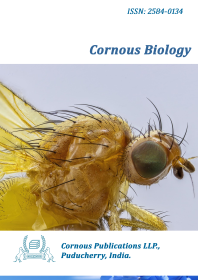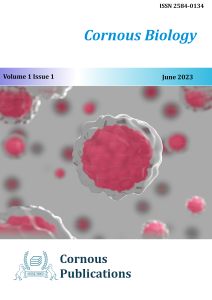

This study was conducted to assess the concentration and relationship of lead, cadmium, and arsenic in the fresh muscle, kidney, and liver of cattle. Thirty samples of each of the meat parts were obtained from the Ashaiman Main, Madina, and Makola Markets within the Accra Metropolis. A GTA Graphite Tube Atomizer was used to analyze the heavy metal concentrations. Arsenic was significantly different in the liver (2.40 mg/100g), kidney (0.93 mg/100g), and muscle (0.35 mg/100g). Lead was significantly higher in the liver (1.14 mg/100g) but insignificant between the kidney (0.67 mg/100g) and muscle (0.66 mg/100g). Arsenic was significantly higher in beef from the Ashaiman Main Market (2.48 mg/100g) than in samples from Madina (0.85 mg/100g) and Makola (0.35 mg/100g) Markets. The concentration of cadmium varied across the meat parts and the three markets. The correlation between the metals in all the meat tissues was weakly positive to high, but the arsenic-cadmium association was weakly negative (r = -0.08). Heavy metals were present in all the meat samples from the three markets, but their concentration depended on the meat parts. Generally, higher concentrations of the metals were recorded in beef from the Ashaiman compared to Madina and Makola Markets. The liver had a comparatively lower heavy metal concentration and was therefore recommended for consumption.
heavy metals, concentration, correlation, beef, markets
Acosta-Coley, I., Mendez-Cuadro, D., Rodriguez-Cavallo, E., de la Rosa, J., & Olivero-Verbel, J.(2019). Trace elements in micro plastics in Cartagena: a hotspot for plastic pollution at the Caribbean. Marine Pollution Bulletin, 139, 402-411.
Adzitey, F., Kumah, A., & Mensah, S. B. K. (2015). Assessment of the presence of selected heavy metals and their concentration levels in fresh and grilled beef/guinea fowl meat in the Tamale Metropolis, Ghana. Research Journal of Environmental Sciences, 9(3), 152-158.
Adzitey, F., Mireku, D., & Huda, N. (2018). Assessment of selected heavy metal concentration in fresh and grilled beef: a case study in East Legon, Ghana. International Journal of One Health, 4, 40-44.
Agency for Toxic Substances and Disease Registry (2004). Annual Report 2004. Retrieved from https://www.atsdr.cdc.gov/hs/ hsees/annual2004.html
Aguilera, A., Bautista-Hernández, D., Bautista, F., Goguitchaichvili, A., & Cejudo, R. (2021). Is the urban form a driver of heavy metal pollution in road dust? Evidence from Mexico City. Atmosphere, 12(2), 266.
Akoto, O., Bortey-Sam, N., Nakayama, S. M., Ikenaka, Y., & Baidoo, E. (2014). Distribution of heavy metals in organs of sheep and goat reared in Obuasi: A gold mining town in Ghana. International Journal of Environmental Science and Toxicology Research, 2(4), 81-89.
Alissa, E. M., & Ferns, G. A. (2011). Heavy metal poisoning and cardiovascular disease. Journal of Toxicology, 2011, 870125. Amusan, A. A., Bada, S. B., & Salami, A. T. (2003). Effect of traffic density on heavy metal content of soil and vegetation along roadsides in Osun State, Nigeria. West African Journal of Applied Ecology, 4, 107-114.
Ano, A. O., Odoemelam, S. A., & Ekwueme, P. O. (2007). Lead and cadmium levels in soils and cassava (Manihot esculenta Crantz) along Enugu-Port Harcourt express way in Nigeria. Electronic Journal of Environmental Agricultural and Food Chemistry, 6(5), 2024-2031.
Bala, A., Muhammada, L. U., Pewan, S. B., Ahmeda, M. S., Muhammad, M., Junaidu, A. U., Salihu, M. D., Magaji, A. A., Faleke, O. O., Agaie, B., Anzaku, S. A., & Saulawad, M. A. (2013). Determination of lead (Pb) residue in kidney, liver, and muscle of slaughtered cattle in Jos Central Abattoir, Plateau State, Nigeria. IOSR Journal Of Environmental Science, Toxicology And Food Technology, 7(6), 48-51.
Baykov, B. D., Stoyanov, M. P., & Gugova, M. L. (1996). Cadmium and lead bioaccumulation in male chickens for high food concentrations. Toxicological & Environmental Chemistry, 54(1-4), 155-159.
Binkowski, L. J. (2012). Is the meat of wild waterfowl fit for human consumption? Preliminary results of cadmium and lead concentration in pectoral muscles of mallards and coots shot in 2006 in Southern Poland. Journal of Microbiology, Biotechnology and Food Sciences, 1, 1120-1128.
Evans, G. W., Majors, P. F., & Cornatzer, W. E. (1970). Mechanism for cadmium and zinc antagonism of copper metabolism. Biochemical and Biophysical Research Communications, 40(5), 1142-1148.
Fan, T., Zhao, J., Chen, Y., Wang, M., Wang, X., Wang, S., Chen, X., Lu, A., & Zha, S. (2021). Coexistence and adsorption properties of heavy metals by polypropylene micro plastics. Adsorption Science & Technology, 1-12.
Geck, O. P., Adzitey, F., Deli, R. A., Huda, N., & Gulam, R. R. A. (2014). Microbial quality of culled chicken layers in Penang, Malaysia. Veterinary World, 7(7), 478-482.
González-Weller, D., Karlsson, L., Caballero, A., Hernández, F., Gutiérrez, A., González-Iglesias, T., Marino, M., & Hardisson, A. (2006). Lead and cadmium in meat and meat products consumed by the population in Tenerife Island, Spain. Food Additives and Contaminants, 23(8), 757-763.
Holmes, L. A., Turner, A., & Thompson, R. C. (2012). Adsorption of trace metals to plastic resin pellets in the marine environment. Environmental Pollution, 160(1), 42-48.
Institute of Medicine (IOM) (2007). Dietary reference intakes for vitamin A, vitamin K, arsenic, boron, chromium, copper, iodine, iron, manganese, molybdenum, nickel, silicon, vanadium, and zinc. Dietary Reference Intakes Research Synthesis: Workshop Summary. Washington, DC: The National Academies Press. https://doi.org/10.17226/11767
Lafuente, A., González-Carracedo, A., Romero, A., Cano, P., & Esquifino, A. I. (2004). Cadmium exposure differentially modifies the circadian patterns of norepinephrine at the median eminence and plasma LH, FSH and testosterone levels. Toxicology Letters, 146(2), 175-182.
Martin, D., Glass, T. A., Bandeen-Roche, K., Todd, A. C., Shi, W., & Schwartz, B. S. (2006). Association of blood lead and tibia lead with blood pressure and hypertension in a community sample of older adults. American Journal of Epidemiology, 163(5), 467-478.
Mills, C. F., & Dalgarno, A. C. (1972). Copper and zinc status of ewes and lambs receiving increased dietary concentrations of cadmium. Nature, 239(5368), 171-173.
Miranda, M., López-Alonso, M., Castillo, C., Hernández, J., & Benedito, J. L. (2005). Effects of moderate pollution on toxic and trace metal levels in calves from a polluted area of northern Spain. Environment International, 31(4), 543-548.
Muluken, M. F. (2014). Heavy metals concentration in effluents of textile industry, Tikur Wuha River and milk of cows watering on this water source, Hawassa, Southern Ethiopia. Research Journal of Environmental Sciences, 8(8), 422-434.
Nawrot, T. S., Staessen, J. A., Roels, H. A., Munters, E., Cuypers, A., Richart, T., Ruttens, A., Smeets, K., Clijsters, H., & Vangronsveld, J. (2010). Cadmium exposure in the population: from health risks to strategies of prevention. Biometals, 23(5), 69-82.
Nkansah, M. A., & Ansah, J. K. (2014). Determination of Cd, Hg, As, Cr and Pb levels in meat from the Kumasi Central Abattoir. International Journal of Scientific and Research Publications, 4(8), 1-4.
Nriagu, J. O. (1988). A silent epidemic of environmental metal poisoning. Environmental pollution, 50(1-2), 139-161.
Obeid, P. J., Younis, M., & El-Nakat, C. S. J. (2016). Distribution levels of lead and cadmium within various fresh meat tissues of beef, goat and lamb and their consumption risk assessment. WIT Transactions on Ecology and the Environment, 203, 101-111.
Okorafor, K. A., & Amadiali, P. (2015). Concentrations of some metals in kidneys and liver of goats slaughtered at Atakpa Abattoir, Calabar South, Cross Rivers State, Nigeria. Biosciences Research in Today’s World, 1(1), 90-96.
Okoye, C. O. B. (1994). Lead and other metals in dried fish from Nigerian markets. Bulletin of Environmental Contamination and Toxicology, 52, 825-832.
Panel-Jiahui , X., Canyang, H., Maolin, W., Zongsheng, Z., Xiaoxue, Z., Liu, C., Yifu, L., & Xiyun, C. (2022). Changeable effects of coexisting heavy metals on transfer of cadmium from soils to wheat grains. Journal of Hazardous Materials, 423(Part B), 127-182.
Pequerul, A., Pérez, C., Madero, P., Val, J., & Monge, E. (1993). A rapid wet digestion method for plant analysis. In M. A. C. Fragoso, M. L. Van Beusichem, A. Houwers (Ed.), Optimization of Plant Nutrition. Developments in Plant and Soil Sciences (pp 3-6). Dordrecht: Springer.
Püssa, T. (2013). Toxicological issues associated with production and processing of meat. Meat Science, 95(4), 844-853.
Rowland, A. S., & McKinstry, R. C. (2006). Lead toxicity, white matter lesions, and aging. Neurology, 66(10), 1464-1465.
Santhi, D. V., Balakrishnan, V., Kalaikannan, A., & Radhakrishnan, K. T. (2008). Presence of heavy metals in pork products in Chennai (India). American Journal of Food Technology, 3(3), 192-199.
Shah, M. T., Ara, J., Muhammad, S., Khan, S., Asad, S. A., & Ali, L. (2014). Potential heavy metals accumulation of indigenous plant species along the mafic and ultramafic terrain in the Mohmand Agency, Pakistan. CLEAN–Soil, Air, Water, 42(3), 339-346.
Sharif, L., Obeidat, J., & Al-Ani, F. (2005). Risk factors for lamb and kid mortality in sheep and goat farms in Jordan. Bulgarian Journal of Veterinary Medicine, 8(2), 99-108.
Ubwa, S. T., Ejiga, R., Okoye, P. A. C., & Amua, Q. M. (2017). Assessment of heavy metals in the blood and some selected entrails of cows, goat and pigs slaughtered at Wurukum Abattoir, Makurdi-Nigeria. Advances in Analytical Chemistry, 7(1), 7-12.
Zhao, Q., Wang, Y., Cao, Y., Chen, A., Ren, M., Ge, Y., Yu, Z., Wan, S., Hu, A., Bo, O., Ruan,L., Chen, H., Qin, S., Chen, W., Hu, C., Tao, F., Xu, D., Xu, J., Wen, L., & Li, L. (2014). Potential health risks of heavy metals in cultivated topsoil and grain, including correlations with human primary liver, lung and gastric cancer, in Anhui province, Eastern China. Science of the Total Environment, 470-471, 340-347.
